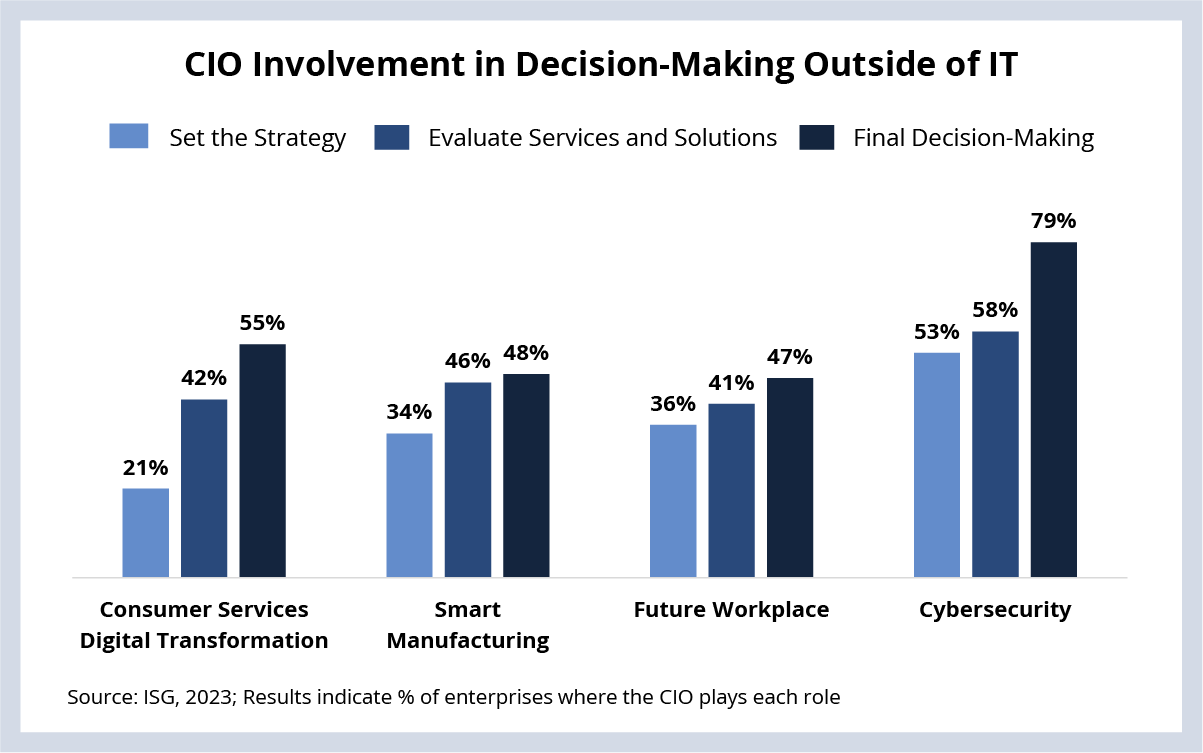If someone forwarded you this briefing, consider subscribing here.
THE CHANGING ROLE OF THE CIO
Throughout the last year, ISG has been studying how different roles in organizations participate in the process of setting technology strategies, evaluating solutions and making final purchasing decisions. The most interesting results come from the trend we see in the role of the CIO. (See Data Watch)
Across four different technology domains, we see the same trend in varying degrees: the CIO is responsible for executing strategies that they have little influence on and is making buying decisions for solutions and services that are evaluated by others in the business. In fact, in a recent study about consumer services digital transformation, the CIO sets the strategy only 21% of the time.
In this research, ISG has studied topics where technology is having the biggest impact on business transformation, addressing new markets and interfacing with customers. In these areas, IT has been an enabler or partner more often than a leader. This reflects a critical change in the market: while the CIO and IT department may still control the operations of the technology, business buyers are setting the technology strategy. The consensus is that technology transformation is too important to leave to IT.
This leaves IT in a reactive mode, monitoring growth in technology spending happening elsewhere in the organization without the influence it once had. Smart manufacturing programs, for example, grew their headcount by an average of five times between 2022 and 2023 – and they report almost exclusively outside of IT. The CIO’s role is to provide a framework in which the smart manufacturing program’s IT environment can grow.
As power shifts away from the CIO, service providers have an opportunity to engage more broadly with the business – both to focus on growth areas of the market and to ensure they are delivering important business outcomes. Service providers must also become adept at balancing the needs of business transformation with the needs of IT operations and be able to support both IT and the business with a point of view backed up by their capabilities.
DATA WATCH

